1
The first inhabitants of the Okanagan Valley were indigenous peoples known as the S-Ookanhkchinx, the Syilx speakers. They were members of the Interior Salish, who lived along the shores of lakes and rivers that flowed into the Columbia River. They were nomadic people who moved locations according to the seasons. They gathered roots and berries that grew on the valley floor; hunted elk, deer and small game that flourished in the surrounding hillsides; and traded with neighbouring tribes. Each fall, families would gather for the great harvest of kokanee (land-locked salmon) and smoke their abundant catch before settling in their villages for winter.With the arrival of European fur traders and the creation of the Okanagan Fur Brigade Trail (c. 1826-1846), the local natives worked as guides and sometimes traded pelts for other goods. Their traditional nomadic lives were gradually transformed with more permanent settlements. They began cultivating the land and grazing their cattle on traditional ranges, while continuing to fish their historic streams.
"As more settlers arrived, reserve lands were increasingly encroached upon and the indigenous people gradually lost access to their traditional water sources and the newly designated Crown grazing lands. Land use became even more insecure with the enactment of the federal Indian Act in 1876. The government's policy of assimilation, the arrival of foreign religions and the residential school system soon diminished and marginalized the once-proud and self-sufficient Okanagans." ("The Kelowna Story: An Okanagan History", S. Simpson, 2011, p. 14)
2
"British Columbia Native Indians Distribution of Ethnic Groups - 1850"1850
British Columbia
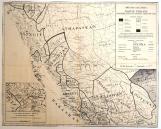 Credits:
Credits:Kelowna Public Archives
3
Group of Okanagans under a rack of drying fish1900s
Okanagan Valley, British Columbia
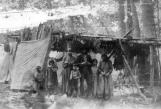 Credits:
Credits:Kelowna Public Archives #7966
4
The first white traders (the North West Company) recorded travelling into the Okanagan Valley were David Stuart and Ovid de Montigny in 1810. In 1814, two traders, William Pion (a Sandwich Islander) and Chief N'Kwala made their headquarters on the tip of the peninsula at the head of Okanagan Lake. With the consolidation of the North West Company and the Hudson Bay Company in 1821, a new Okanagan trail, the Okanagan Fur Brigade Trail, was blazed on the west banks of Okanagan Lake around 1824. The trail helped to establish a new trade route between the Fraser and Columbia Rivers.With the U.S. and British boundary settlement (49th parallel) in 1846, the course of travel into the interior of British Columbia was changed. As trade was now being routed from the Fraser Valley to Fort Langley, the first capital of the Crown Colony in British Columbia, the Okanagan Trail was not used again until the gold rush of the 1850s. The gold rush signalled the end of the fur trade, and by 1858 there were as many as 30,000 miners in British Columbia.
By the time the last of the fur brigades passed through the Okanagan in 1847, Protestant missionaries were already well established in the Oregon territories. The Catholic Church needed a presence in the new land. As there was not an abundance of priests available, they appealed to France for assistance. Charles John Felix Adolph Pandosy left Marseilles in 1847, along with a small group of Oblates and sailed to the New World.
Following several assignments in Oregon Territory and Esquimalt, Father Pandosy arrived in the Okanagan Valley in October 1859 with his fellow Oblate Priests. Father Pierre Richard, Brother Phillipe Surel and accompanied by Cyprienne and Theodor Laurence (French Canadian Brothers who had been involved in the fur trade), Cyprienne's native wife Therese (Flathead Indian Reservation) and an unnamed Flathead man and his wife, they were escorted by William Pion, the scout for this small party. Once arriving in the Valley, the Missionaries and the settlers made their first camp at Duck Lake.
In a letter to Father D'Herbomez on October 9, 1859, his superior in France, Father Pandosy wrote: "We arrived tonight at a place which we have chosen for our Mission. It is a great valley situated on the left bank of the great Lake Okanagan, and rather near the middle of the Lake ..."
"L'Anse au Sable is the largest valley of all the surrounding country, all who know it, praise it. The cultivable land is immense, and I myself believe that if Br. Blanchett is able next year to plant some vine cuttings, we shall be able to start a plantation."
This first winter proved to be intensely cold with deep snow forcing them to kill their horses for survival and to live on mosses, dried berries and roots and native teas. In the spring of 1860, they moved further down the valley to establish a permanent mission and settled on Mission Creek where there was better cultivable land. This was the beginning of Father Pandosy's Mission of the Immaculate Conception at L'Anse au Sable (Sandy Cove).
5
Portrait of Father Pandosypre 1890
Father Pandosy Mission, Okanagan Mission, British Columbia
 Credits:
Credits:Kelowna Public Archives #1886
6
Priests' house at Father Pandosy MissionCirca 1900
Father Pandosy Mission, Okanagan Mission, British Columbia
 Credits:
Credits:Kelowna Public Archives #4
7
With the establishment of the new Catholic Mission, the area became known as the Mission Valley."At that time and for many years thereafter that part of the Okanagan country, extending from Long Lake (now Kalamalka) in the north, to the mountains south of Mission Creek was known as Mission Valley" (OHS 23rd Report 1959, page 116)
8
View of Okanagan Mission ValleyCirca 1892
Okanagan Mission Valley, British Columbia
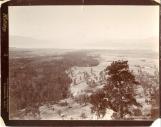 Credits:
Credits:Kelowna Public Archives #1342
9
With the success of this new agricultural settlement, new settlers began to arrive (mainly the French and English). A number of families, notably Hudson's Bay Company trader John McDougall and his native wife; Eli Lequime, his wife Marie Louise and sons Bernard and Gaston; August Calmels and his wife; Calmels' business partner Chapuis; Joseph Christien; Isadore Boucherie; August Gillard; Jules Blondeaux; Francois Orthola and Fredrick Brent settled in the Mission Valley in the early 1860s.10
Settlement map of the Mission Valley in 1880Circa 1965-66
Okanagan Mission Valley, British Columbia
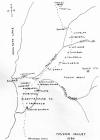 Credits:
Credits:"Ogopogo's Vigil", F.M. Buckland, Okanagan Historical Society, Kelowna Branch, 1979 (revised- fourth printing), p. 62
Primrose Upton (drew map for 1966 second printing)
11
Portrait of John McDougallCirca 1890
Okanagan Mission Valley, British Columbia
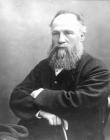 Credits:
Credits:Kelowna Public Archives #3263
12
Portrait of Eli LequimeCirca 1890
Okanagan Mission Valley, British Columbia
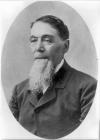 Credits:
Credits:Kelowna Public Archives #94
13
Portrait of Joseph and Annie ChristienCirca 1869
Okanagan Mission Valley, British Columbia
 Credits:
Credits:Kelowna Public Archives #100
14
Portrait of Frederick BrentCirca 1890s
Vernon, British Columbia
 Credits:
Credits:Kelowna Public Archives #98